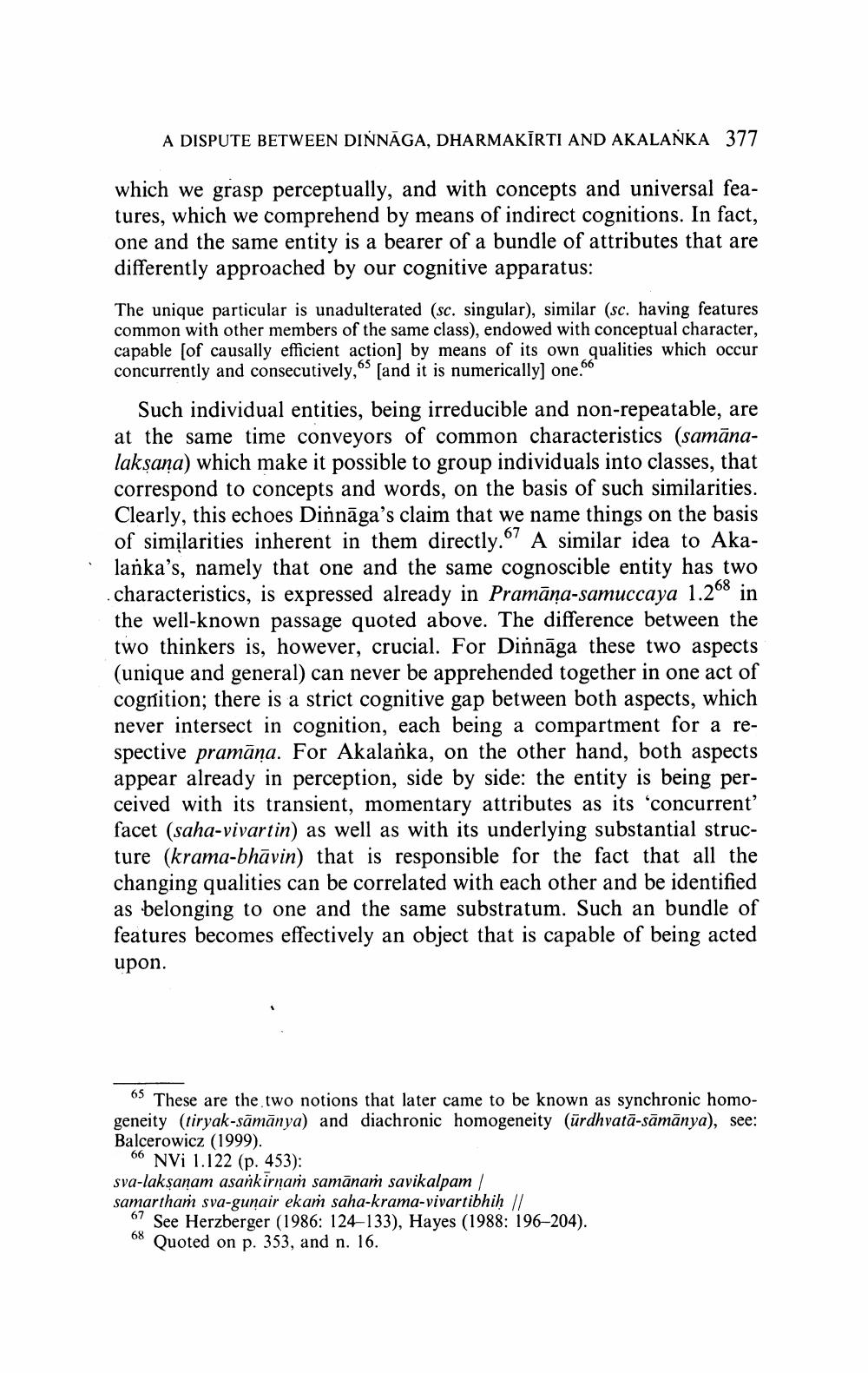________________
A DISPUTE BETWEEN DINNAGA, DHARMAKĪRTI AND AKALANKA 377
which we grasp perceptually, and with concepts and universal features, which we comprehend by means of indirect cognitions. In fact, one and the same entity is a bearer of a bundle of attributes that are differently approached by our cognitive apparatus:
The unique particular is unadulterated (sc. singular), similar (sc. having features common with other members of the same class), endowed with conceptual character, capable [of causally efficient action] by means of its own qualities which occur concurrently and consecutively, [and it is numerically] one.
65
67
Such individual entities, being irreducible and non-repeatable, are at the same time conveyors of common characteristics (samānalakṣaṇa) which make it possible to group individuals into classes, that correspond to concepts and words, on the basis of such similarities. Clearly, this echoes Dinnaga's claim that we name things on the basis of similarities inherent in them directly. A similar idea to Akalanka's, namely that one and the same cognoscible entity has two characteristics, is expressed already in Pramana-samuccaya 1.268 in the well-known passage quoted above. The difference between the two thinkers is, however, crucial. For Dinnaga these two aspects (unique and general) can never be apprehended together in one act of cognition; there is a strict cognitive gap between both aspects, which never intersect in cognition, each being a compartment for a respective pramāna. For Akalanka, on the other hand, both aspects appear already in perception, side by side: the entity is being perceived with its transient, momentary attributes as its 'concurrent' facet (saha-vivartin) as well as with its underlying substantial structure (krama-bhāvin) that is responsible for the fact that all the changing qualities can be correlated with each other and be identified as belonging to one and the same substratum. Such an bundle of features becomes effectively an object that is capable of being acted upon.
65 These are the two notions that later came to be known as synchronic homogeneity (tiryak-sāmānya) and diachronic homogeneity (urdhvatā-sāmānya), see: Balcerowicz (1999).
66 NVi 1.122 (p. 453):
sva-lakṣaṇam asankirnaṁ samānam savikalpam | samartham sva-gunair ekam saha-krama-vivartibhiḥ ||
67 See Herzberger (1986: 124-133), Hayes (1988: 196-204). 68 Quoted on p. 353, and n. 16.




